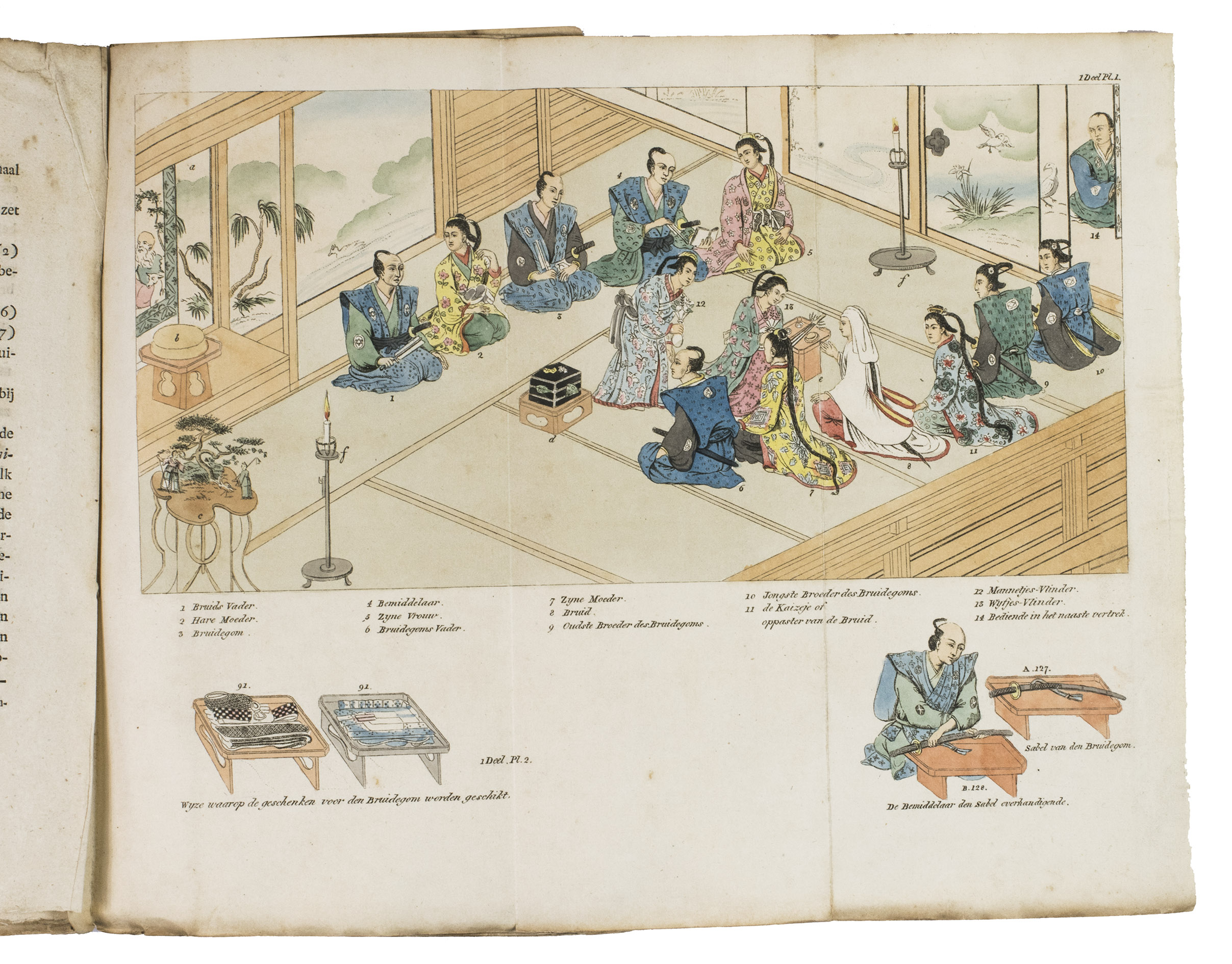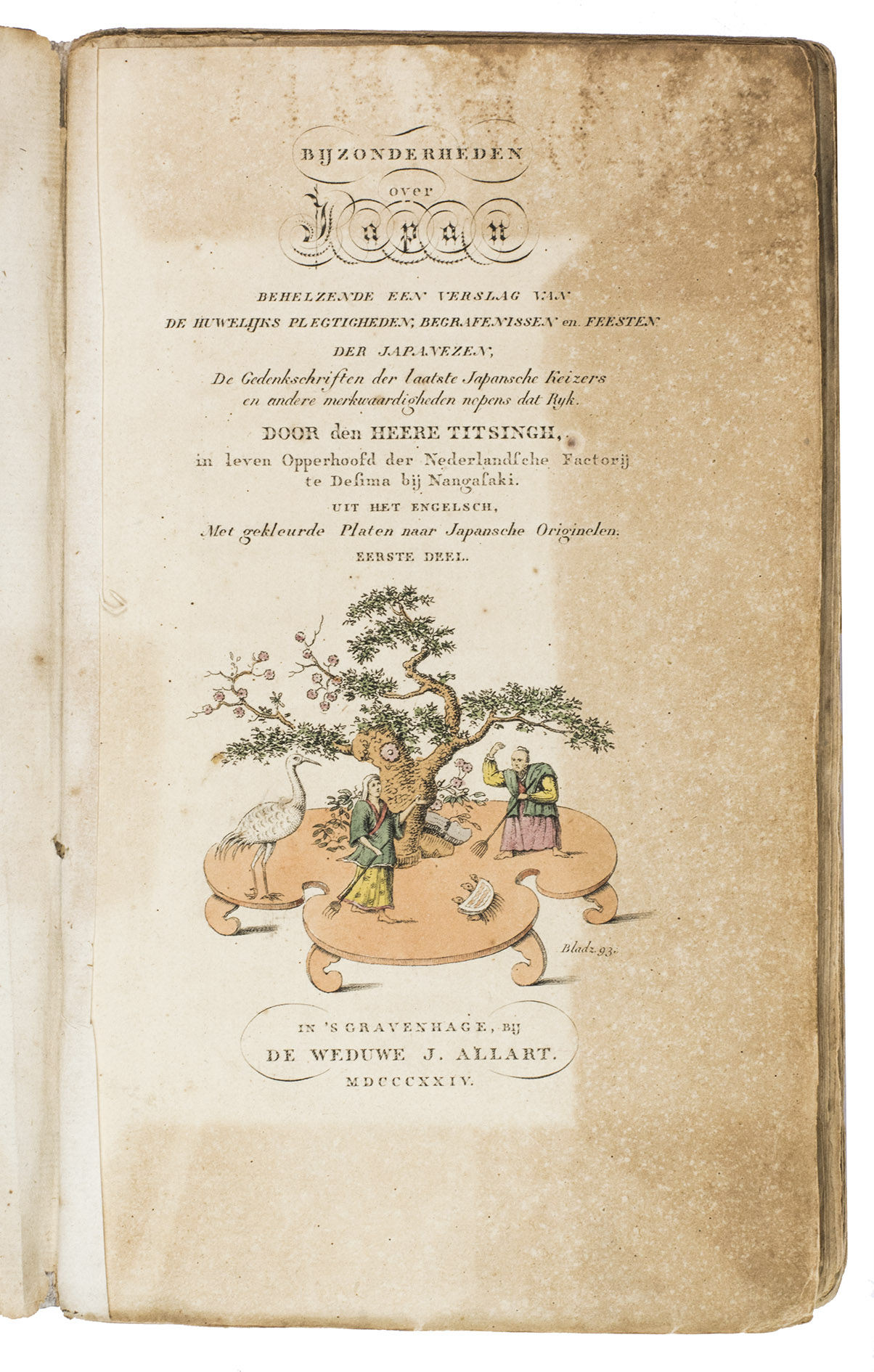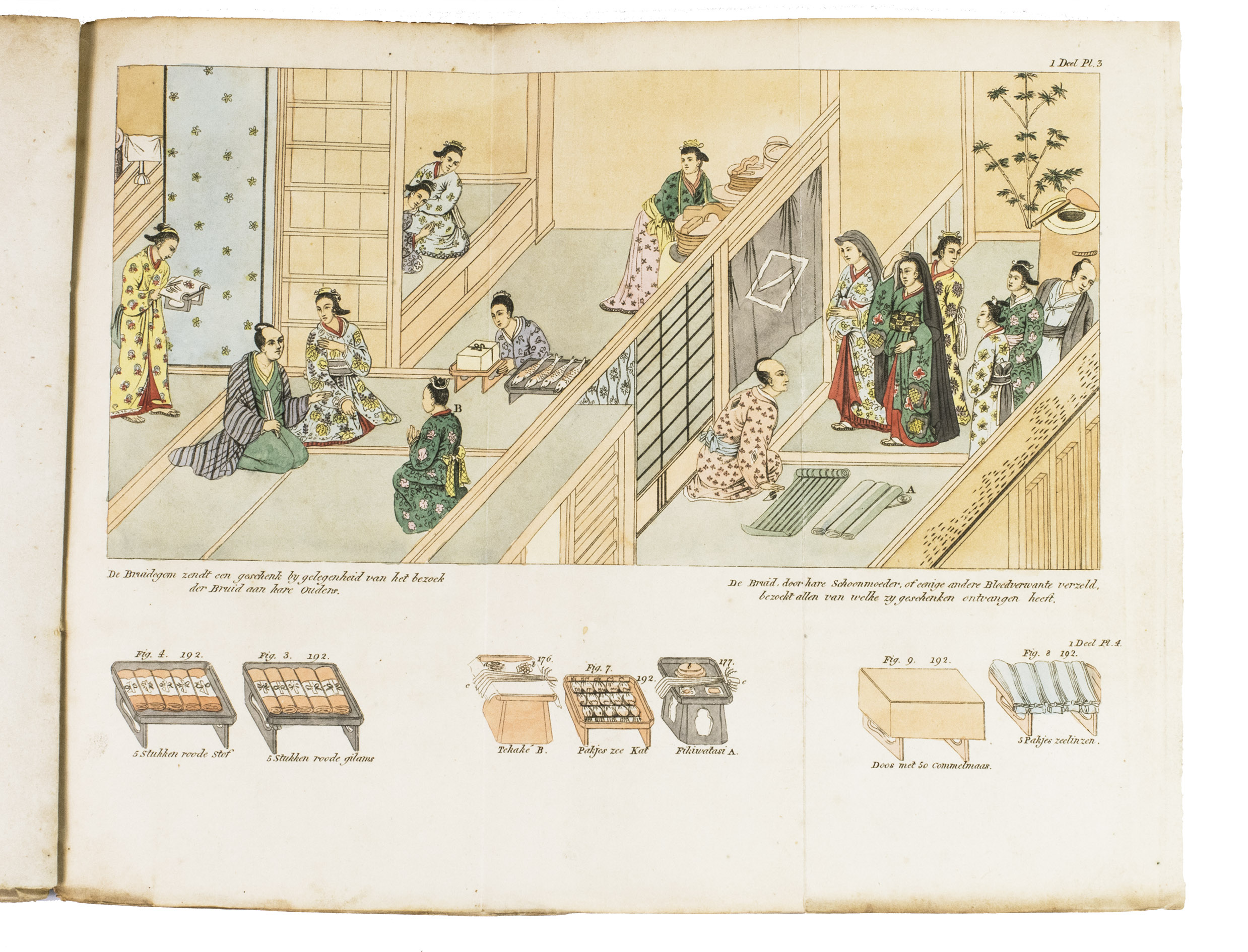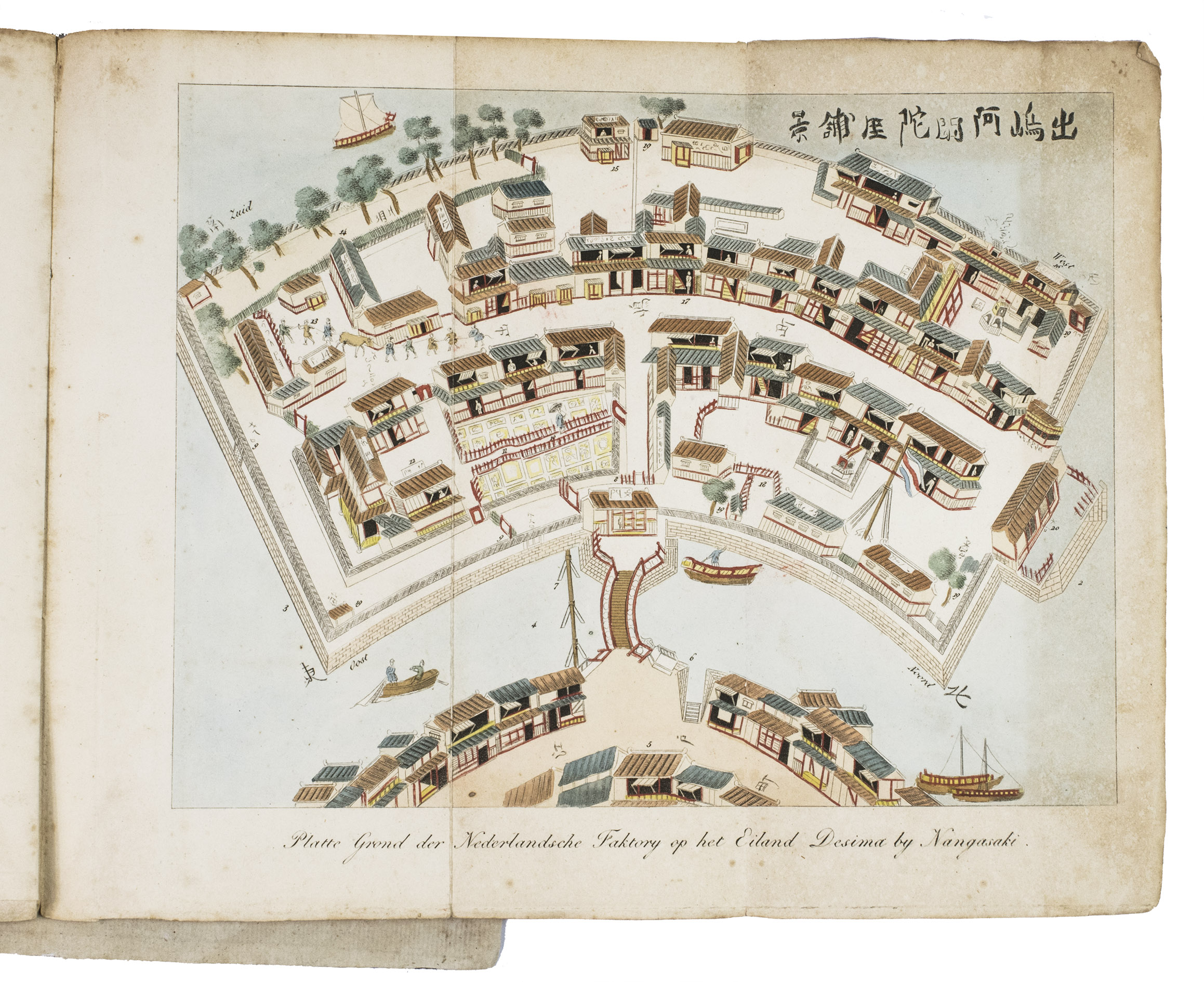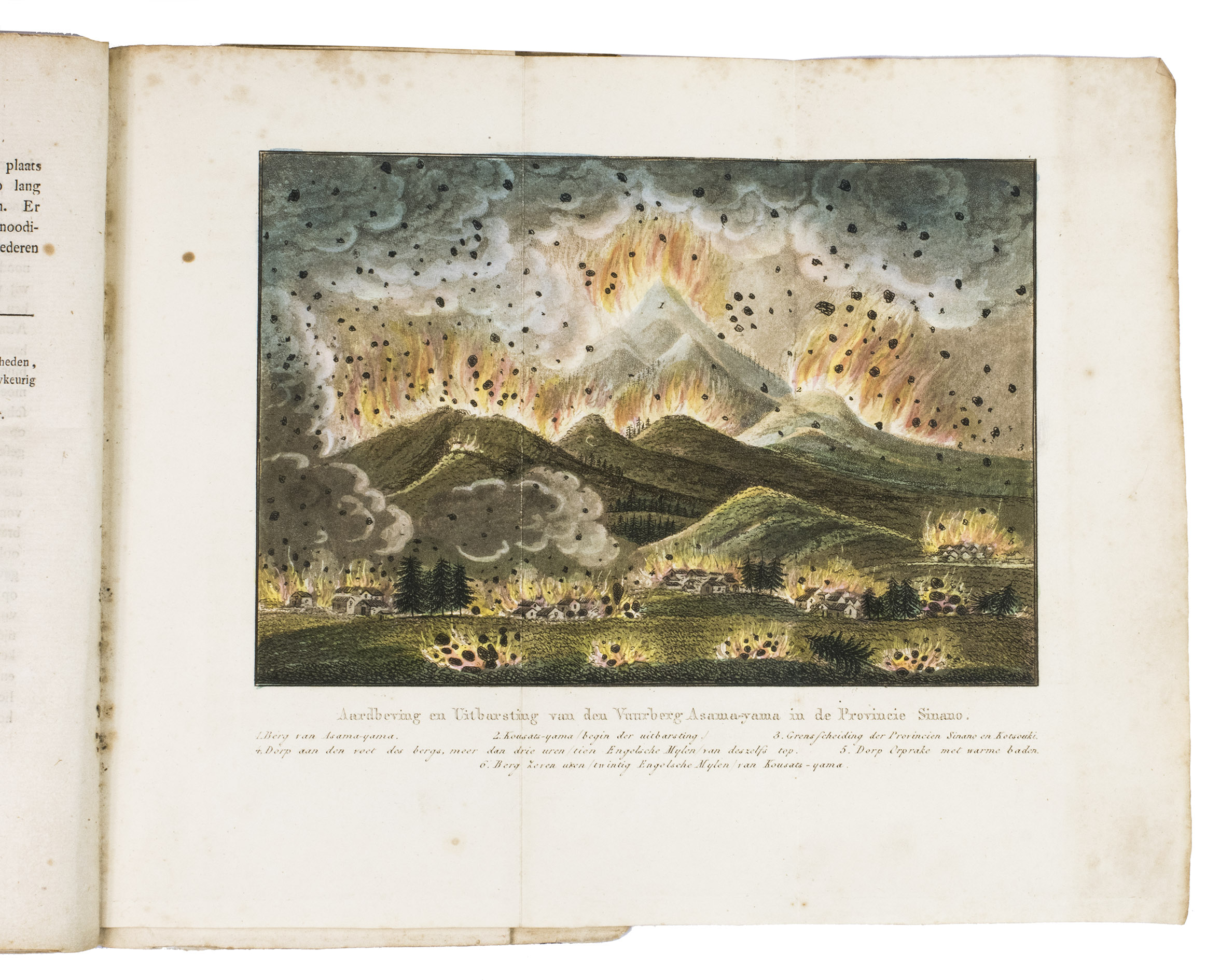TITSINGH, Isaac.
Bijzonderheden over Japan, behelzende een verslag van de huwelijkse plegtigheden, begrafenissen en feesten der Japanezen. De Gedenkschriften der laatste Japansche keizers en andere merkwaardigheden nopens dat Rijk.
The Hague, the widow of J. Allart, 1824-1825. 2 volumes. 8vo. With 4 hand-coloured folding aquatint plates, and a hand-coloured engraved vignette on the title page of each volume. Contemporary marbled boards. XVI, 250; [1], [1 blank], 264 pp.
€ 6,900
First Dutch edition of a beautifully illustrated work on the Japanese festive ceremonies and customs. The work was written by Isaac Titsingh (1745-1812), then Head of the Dutch Factory at Decima, the only place in Japan from where connections with the rest of the world were maintained until far into the 19th century. Titsingh was allowed to visit the Japanese court several times, and is therefore one of the very few European observers and eye-witnesses of Japanese culture and customs in the 18th century.
The first volume consists of essays on Japanese marriage and funeral ceremonies, an account of "dosia" powder, and some notes on the works of Confucius. It is concluded by a catalogue of books, manuscript, plans, and artefacts collected by Titsingh. The second volume includes a series of anecdotes about the shoguns, followed by several short essay, amongst others on seppuku (ritual suicide) and Japanese poetry, ending with explanations of the plans of the Dutch and Chinese factories at Nagasaki. The plates show a wedding ceremony, a volcanic eruption of Mount Asama, and the Dutch Factory at Decima.
Titsingh was a diplomat, historian, and merchant, who had a great interest in Japan. He moved to the East Indies in 1766 and stayed for most of his life. He spent a total of three years and eight months in Japan between 1778-1788, and amassed a large collection of authentic source materials on Japan during this time, including printed books, manuscripts, prints, maps, city plans and coins. He came back to Holland in 1809, but quickly moved to Paris on account of the political situation. In Paris he began preparations for a monumental work on Japan, based on the artefacts in his collection, as well as his own notes, but he died suddenly in 1812. When his son Willem went bankrupt, he sold his father's collection, which was then scattered all over Europe. Both a French and English publisher must have acquired some of the material, as selections of it were printed in both countries. They were published in two volumes in Paris as Cérémonies usitées en Japon pour les mariages et les funérailles (1819), and Mémoires et anecdotes de la dynastie regnante des Djogouns (1820). The London edition, Illustrations of Japan (1822), which was only printed in one volume, was not a direct translation of the French works, but clearly used the same source material. The present Dutch version is a translation of the English edition. Due to the impact of his collection and scholarly activities, Titsingh can be seen as the founder of European Japanology.
The boards of both volumes are somewhat scratched, the spine of both volumes has cracked, but the structural integrity of the binding is still intact. The first and last two leaves of each volume have browned around the edges, likely from a past protective wrapper, the work is slightly browned and foxed throughout, the final quire and the two plates in volume 2 have detached, but are still present, annotations in pencil in the margins on some of the leaves. Otherwise in good condition. Alt Japan Kat. 1520; Cordier, Japonica, col. 451; Landwehr, Coloured plates, 456; Tiele 1096.
Related Subjects:
